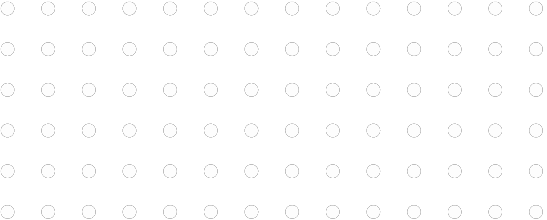Quantity Takeoff
5 Days- That's a Lightning Fast Turnaround Time!
1
Upload Files and Pay
Upload PDF or CAD files, and pay to start the process. An engineer is auto-assigned to your project.
2
Document Review
An engineer will review all the documents shared and connect with you if anything else is required. Initial work starts.
3
Work Starts
Actual design/ report creation work begins.
4
Quality Check
The design and report are checked by the project manager to make sure 100% quality work is delivered.
5
Delivery
The design/ report is delivered to you.
NEED HELP OR ADDITIONAL INFORMATION?
CALL US NOW
(646) 776-4010Get Your Quantity Takeoff In 3 Easy Steps
0%
Get your Quantity Take-off report to understand the exact material used in the building
0 Errors
Get the accurate Quantity Take-off report within
5 Days
Determine the exact Quantity used and required
Save Money
Save time and cost, get client approvals
All in One Go
Starting
$ 750
Quantity Takeoff
Documents Required
MEP drawings of the property in CAD or PDF.
Delivery Time & Standards
We deliver your report (digitally) within 5 business days.
What's not Covered
This service does not cover site visits, stamping, DOB/DEP filing, and more than 2 minor iterations.
Service Constraint
The service fee is per trade for an area of up to 30,000 sq. ft.*.
$750*
Quantity Takeoff


Get the Quantity Take-off report at lightning speed.


Error-free calculations that match your requirements.


Determine the exact Quantity used and required.


Save time and cost, and get client approvals.
Quantity Takeoff / Material Takeoff Services
Reliable
Our experienced designers are trusted by countless businesses and clients for their excellent work!
Easy
Just hand over your PDF or CAD files- we will take care of the rest.
Fast
We deliver right on time so that you can build faster and enjoy a quick value for money.


Our on-demand engineering expert
Still not sure about how to proceed?
YOU CAN WRITE TO ME AT inquiry@ny-engineers.com

Quantity takeoff consists of calculating the list of materials required to complete a construction project, which includes quantities and prices. Quantity takeoff is also referred to as material takeoff or construction takeoff, and it serves as the starting point for many project decisions.
- Accurate quantity takeoff is very important when budgeting a construction project: materials represent a high percentage of total project costs, and many labor costs are calculated based on material quantities.
- Material purchases can only be planned accurately after the quantity takeoff procedure has been completed.
- Quantity takeoff services also simplify bidding and tendering, since offers from different contractors are compared based on the same work quantities.
With the increased adoption of Building Information Modeling (BIM), the applications of quantity takeoff have expanded. The traditional takeoff process is time-consuming, and comparing the material cost of multiple design options is not feasible. On the other hand, BIM software uses automated calculations to complete material takeoff in just a fraction of the time required by a human estimator. Design engineers can analyze the cost impact of their decisions more easily when using BIM software, and project owners can optimize their budgets.
NY Engineers offers quantity takeoff services for construction projects of all types, including: new buildings, major renovations, MEP equipment upgrades, utility service connections, deep energy retrofits, commercial solar systems, and EV charging stations.
Quantity takeoff is the basis for many technical and financial decisions in construction projects. Having a detailed list of materials with accurate pricing data is useful for architects, engineers, construction managers, general contractors, specialty trade contractors, homebuilders, project owners, procurement managers, financial managers, etc.
1) Construction Managers
One of the main responsibilities of construction managers is completing projects on time and on budget, and quantity takeoff simplifies their job. The takeoff process gives construction managers a clear picture of material requirements in projects, and they can quickly identify tasks that are using more materials than they should.
Construction managers can also use the project schedule and bill of materials (BOM) to determine material requirements during each stage of the building process. They know exactly when each material is required and in what quantities, and purchases can be scheduled more efficiently. Along with construction drawings and project schedules, the bill of quantities is one of the most useful reference documents for construction managers.
2) Residential Home Builders and Renovators
Home prices are highly susceptible to inflation and interest rates, and a quick design and construction process reduces risk for homebuilders. They can rely on professional material takeoff services to complete their budgets quickly, making sure all key materials are purchased before prices increase further.
A swift takeoff process offers a competitive advantage for home builders and renovators, especially when real estate prices are rising. Homes can be priced based on market rates at the time of completion, but material prices have already been locked in from the start.
Unplanned material purchase can have a negative impact on home builder profits, since they must assume any price hikes that have occurred since the initial purchase. However, this can be prevented with accurate quantity takeoff.
3) General Contractors
General contractors are responsible for coordinating specialty subcontractors, and material requirements are very different among trades. Quantity takeoff can be used to break down the material requirements of each subcontractor, and the general contractor can keep track of the completed work more efficiently. General contractors can also manage their profit margins more accurately when they have a clear picture of the material requirements of each project.
Accurate quantity takeoff also simplifies the bidding process, especially when the project involves many skilled trades. The scope of work can be divided more easily among subcontractors when you have a comprehensive bill of quantities that is broken down by technical area:
- Electrical takeoff
- Mechanical takeoff
- Plumbing takeoff
General contractors can also use material takeoff to optimize their procurement process. Knowing the material requirements at each stage of construction, and the typical delivery times of material and equipment providers, they can make sure all purchases are completed on time. This is especially helpful when dealing with materials that are not locally available: general contractors know exactly when they are needed, and deliveries can be planned accordingly.
4) Energy and Utility Contractors
Building systems that use utility inputs such as electricity or natural gas bring an additional design challenge. Lowering upfront costs is important, but design engineers must also consider energy and water bills over time. In many cases, a more expensive design can be justified if the long-term utility savings outweigh the additional upfront costs.
- Quantity takeoff is very useful when comparing design options for building systems that use energy or water.
- You can analyze the savings and additional costs associated with each design alternative, and choose the option that results in the highest ROI for the project owner
BIM and energy modeling software can be used to optimize the cost of energy-consuming building systems. While BIM software automates quantity takeoff, energy modeling software provides an accurate estimate of their utility costs.
At NY Engineers we have ample experience with energy modeling and BIM software, and we combine both tools to optimize your building design.
5) Civil, Mechanical and Structural Engineers
One of the main challenges for design engineers is meeting construction codes at an optimal cost. Many cities have stringent code requirements for mechanical systems and structural elements, and engineers must often choose between multiple design options that meet code. Quantity takeoff becomes a powerful tool in this case, since it can be used to compare the material costs associated with each design option.
Automated quantity takeoff via BIM software simplifies the design process for civil, mechanical and structural engineers. Takeoff procedures that would require many hours of work can be completed within minutes, and engineers can compare several design options in terms of cost and code compliance.
6) Architects and other Design Professionals
After completing a building design, architects are often responsible for managing multiple aspects of a project: structural design, MEP design, bidding and tendering, communication between the owner and contractors, supervision, reviewing construction estimates, etc.
Quantity takeoff is a helpful project management tool for architects and other design professionals, since it provides a detailed breakdown of project costs. Accurate material quantities are especially helpful when a building project reaches the construction stage: architects can compare actual material usage with planned quantities, and they can prevent cost overruns more easily.
BIM software brings many features that are not available in traditional drafting software, and one of the most powerful tools available is automated quantity takeoff.
Conventional takeoff is completed manually - construction estimators calculate material quantities based on construction drawings and technical specifications.
- This approach has been used successfully in the construction industry, but the process can consume many hours of work, especially in large projects.
- Manual takeoff can also waste plenty of time if design changes are introduced later. In this case, construction estimators must repeat all calculations based on the new design.
When using BIM software, design engineers can specify the material properties of construction elements and MEP components Once a building model is complete, the software can calculate material quantities automatically based on this information.
- Material properties are often specified per unit of length, area or volume - depending on the type of work. For example, electrical conduit can be specified based on length, and roofing can be specified based on area.
- In other cases, material properties are specified based on the number of components. For example, the materials required for a lighting system can be specified per fixture, since using length/area/volume is impractical in this case.
The speed of BIM-based quantity takeoff brings an additional advantage: you can compare the material cost of multiple design options in a short time.
- Software recalculates quantities automatically in response to design changes, and you can observe the cost impact of different options directly.
- This is not feasible when using manual takeoff, since construction estimators must repeat time-consuming calculations for each design alternative.
BIM-based quantity takeoff can be used to guide investment decisions, since you can generate multiple scenarios with accurate costs in a short time. This is not feasible with conventional takeoff, since the time required to compare the cost of multiple designs is prohibitive.
Even if there is only one design option, BIM-based construction takeoff gives you the flexibility to introduce design changes at any time, even after material quantities have already been calculated. Unlike a human estimator who must repeat long calculations, BIM software can repeat quantity takeoff in an instant.
At NY Engineers we have ample experience with all stages of building projects: planning, design, construction management, property condition assessments, major renovations, energy audits, energy benchmarking, whole-building retrofits, and compliance with local laws and regulations.
Our service offering includes automated quantity takeoff via BIM software, and we have worked across multiple industry sectors: quick service restaurants, healthcare, fitness, banking, retail, multifamily residential projects, etc. We also offer trade-specific takeoff services for specialty contractors:
- Electrical estimating services
- Mechanical estimating services
- Plumbing estimating services
We have provided design and consulting services in more than 1000 projects, and we have worked with over 97 leading franchise brands. NY Engineers is licensed in all 50 states, and we have an 80% first-time approval rate with local building departments.
What is Quantity Takeoff?

Quantity takeoff consists of calculating the list of materials required to complete a construction project, which includes quantities and prices. Quantity takeoff is also referred to as material takeoff or construction takeoff, and it serves as the starting point for many project decisions.
- Accurate quantity takeoff is very important when budgeting a construction project: materials represent a high percentage of total project costs, and many labor costs are calculated based on material quantities.
- Material purchases can only be planned accurately after the quantity takeoff procedure has been completed.
- Quantity takeoff services also simplify bidding and tendering, since offers from different contractors are compared based on the same work quantities.
With the increased adoption of Building Information Modeling (BIM), the applications of quantity takeoff have expanded. The traditional takeoff process is time-consuming, and comparing the material cost of multiple design options is not feasible. On the other hand, BIM software uses automated calculations to complete material takeoff in just a fraction of the time required by a human estimator. Design engineers can analyze the cost impact of their decisions more easily when using BIM software, and project owners can optimize their budgets.
NY Engineers offers quantity takeoff services for construction projects of all types, including: new buildings, major renovations, MEP equipment upgrades, utility service connections, deep energy retrofits, commercial solar systems, and EV charging stations.
Who Can Benefit from Quantity Take-Off?
Quantity takeoff is the basis for many technical and financial decisions in construction projects. Having a detailed list of materials with accurate pricing data is useful for architects, engineers, construction managers, general contractors, specialty trade contractors, homebuilders, project owners, procurement managers, financial managers, etc.
1) Construction Managers
One of the main responsibilities of construction managers is completing projects on time and on budget, and quantity takeoff simplifies their job. The takeoff process gives construction managers a clear picture of material requirements in projects, and they can quickly identify tasks that are using more materials than they should.
Construction managers can also use the project schedule and bill of materials (BOM) to determine material requirements during each stage of the building process. They know exactly when each material is required and in what quantities, and purchases can be scheduled more efficiently. Along with construction drawings and project schedules, the bill of quantities is one of the most useful reference documents for construction managers.
2) Residential Home Builders and Renovators
Home prices are highly susceptible to inflation and interest rates, and a quick design and construction process reduces risk for homebuilders. They can rely on professional material takeoff services to complete their budgets quickly, making sure all key materials are purchased before prices increase further.
A swift takeoff process offers a competitive advantage for home builders and renovators, especially when real estate prices are rising. Homes can be priced based on market rates at the time of completion, but material prices have already been locked in from the start.
Unplanned material purchase can have a negative impact on home builder profits, since they must assume any price hikes that have occurred since the initial purchase. However, this can be prevented with accurate quantity takeoff.
3) General Contractors
General contractors are responsible for coordinating specialty subcontractors, and material requirements are very different among trades. Quantity takeoff can be used to break down the material requirements of each subcontractor, and the general contractor can keep track of the completed work more efficiently. General contractors can also manage their profit margins more accurately when they have a clear picture of the material requirements of each project.
Accurate quantity takeoff also simplifies the bidding process, especially when the project involves many skilled trades. The scope of work can be divided more easily among subcontractors when you have a comprehensive bill of quantities that is broken down by technical area:
- Electrical takeoff
- Mechanical takeoff
- Plumbing takeoff
General contractors can also use material takeoff to optimize their procurement process. Knowing the material requirements at each stage of construction, and the typical delivery times of material and equipment providers, they can make sure all purchases are completed on time. This is especially helpful when dealing with materials that are not locally available: general contractors know exactly when they are needed, and deliveries can be planned accordingly.
4) Energy and Utility Contractors
Building systems that use utility inputs such as electricity or natural gas bring an additional design challenge. Lowering upfront costs is important, but design engineers must also consider energy and water bills over time. In many cases, a more expensive design can be justified if the long-term utility savings outweigh the additional upfront costs.
- Quantity takeoff is very useful when comparing design options for building systems that use energy or water.
- You can analyze the savings and additional costs associated with each design alternative, and choose the option that results in the highest ROI for the project owner
BIM and energy modeling software can be used to optimize the cost of energy-consuming building systems. While BIM software automates quantity takeoff, energy modeling software provides an accurate estimate of their utility costs.
At NY Engineers we have ample experience with energy modeling and BIM software, and we combine both tools to optimize your building design.
5) Civil, Mechanical and Structural Engineers
One of the main challenges for design engineers is meeting construction codes at an optimal cost. Many cities have stringent code requirements for mechanical systems and structural elements, and engineers must often choose between multiple design options that meet code. Quantity takeoff becomes a powerful tool in this case, since it can be used to compare the material costs associated with each design option.
Automated quantity takeoff via BIM software simplifies the design process for civil, mechanical and structural engineers. Takeoff procedures that would require many hours of work can be completed within minutes, and engineers can compare several design options in terms of cost and code compliance.
6) Architects and other Design Professionals
After completing a building design, architects are often responsible for managing multiple aspects of a project: structural design, MEP design, bidding and tendering, communication between the owner and contractors, supervision, reviewing construction estimates, etc.
Quantity takeoff is a helpful project management tool for architects and other design professionals, since it provides a detailed breakdown of project costs. Accurate material quantities are especially helpful when a building project reaches the construction stage: architects can compare actual material usage with planned quantities, and they can prevent cost overruns more easily.
BIM-Based Takeoff: Advantages Over Conventional Takeoff
BIM software brings many features that are not available in traditional drafting software, and one of the most powerful tools available is automated quantity takeoff.
Conventional takeoff is completed manually - construction estimators calculate material quantities based on construction drawings and technical specifications.
- This approach has been used successfully in the construction industry, but the process can consume many hours of work, especially in large projects.
- Manual takeoff can also waste plenty of time if design changes are introduced later. In this case, construction estimators must repeat all calculations based on the new design.
When using BIM software, design engineers can specify the material properties of construction elements and MEP components Once a building model is complete, the software can calculate material quantities automatically based on this information.
- Material properties are often specified per unit of length, area or volume - depending on the type of work. For example, electrical conduit can be specified based on length, and roofing can be specified based on area.
- In other cases, material properties are specified based on the number of components. For example, the materials required for a lighting system can be specified per fixture, since using length/area/volume is impractical in this case.
The speed of BIM-based quantity takeoff brings an additional advantage: you can compare the material cost of multiple design options in a short time.
- Software recalculates quantities automatically in response to design changes, and you can observe the cost impact of different options directly.
- This is not feasible when using manual takeoff, since construction estimators must repeat time-consuming calculations for each design alternative.
BIM-based quantity takeoff can be used to guide investment decisions, since you can generate multiple scenarios with accurate costs in a short time. This is not feasible with conventional takeoff, since the time required to compare the cost of multiple designs is prohibitive.
Even if there is only one design option, BIM-based construction takeoff gives you the flexibility to introduce design changes at any time, even after material quantities have already been calculated. Unlike a human estimator who must repeat long calculations, BIM software can repeat quantity takeoff in an instant.
Quantity Takeoff: How NY Engineers Can Help You
At NY Engineers we have ample experience with all stages of building projects: planning, design, construction management, property condition assessments, major renovations, energy audits, energy benchmarking, whole-building retrofits, and compliance with local laws and regulations.
Our service offering includes automated quantity takeoff via BIM software, and we have worked across multiple industry sectors: quick service restaurants, healthcare, fitness, banking, retail, multifamily residential projects, etc. We also offer trade-specific takeoff services for specialty contractors:
- Electrical estimating services
- Mechanical estimating services
- Plumbing estimating services
We have provided design and consulting services in more than 1000 projects, and we have worked with over 97 leading franchise brands. NY Engineers is licensed in all 50 states, and we have an 80% first-time approval rate with local building departments.


